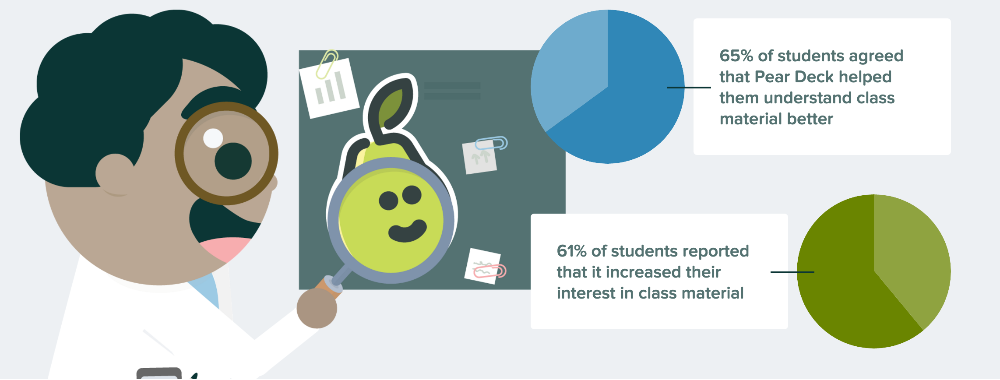To some degree, we intuit that getting students actively involved in class will help them learn, but it's not always obvious just how much it helps them.
It helps A LOT. Did you know that students in traditional lecture courses are 60% more likely to fail than students who learn the same material with active learning methods?
Source: http://www.pnas.org/content/111/23/8410.full.pdf



Overall, teachers like you, who get students actively thinking about and discussing the material, see an average achievement bump of 6 percentage points.
But that's just an average. Your methods are really helping traditionally disadvantaged populations, like female, less affluent, and first generation students.
When you use active learning techniques, you get...

Your hard work pays dividends
Students who feel engaged in material relevant to their lives and who feel a sense of belonging or connection to their teacher and peers, are more likely to stay in school. These students also show better classroom behavior, improving the atmosphere of the room.
Johns Hopkins + Pear Deck
In 2015, we worked with the NYC Department of Education Office of Innovation & EdTech iZone and Johns Hopkins University to study the efficacy of Pear Deck in the classroom. The study found the following:

Pear Deck Teachers Interacted with Students 16 Million Times in 2015
We know Pear Deck is just one piece of a much larger engagement puzzle and even this one piece is making a big difference for your students. The work you are doing to engage your students in your course material is tremendously important, the research shows this.
The team at Pear Deck promises to continue to deliver the most useful features and updates we can to make active learning easy in your classroom. Let's keep this engagement going by making a new deck!
